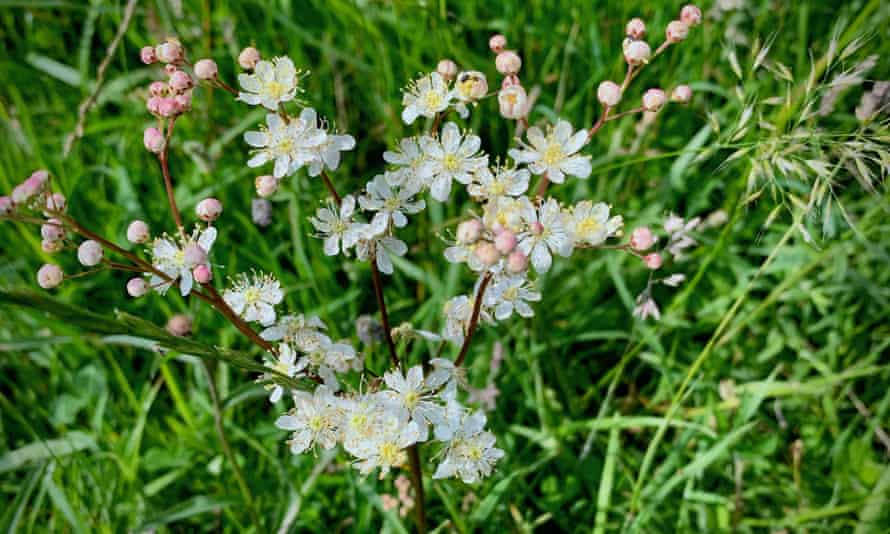Country diary: the chalk-loving charmer that plays with light
Devil’s Dyke, West Sussex: The dropwort is a rarity, but it outshines its neighbours, wherever it rises

There was this flower, growing in grasses flowing with the wind that lifted hang-gliders above the high downs, carried butterflies, hummed through the extendable lead connecting a dog to the person he was exercising, a wind that sang with the skylarks, higher and higher. This flower of chalk downland grew from the roll of hills at Devil’s Dyke, above the deep valley cleft the devil made to let the sea flood the people of the Weald.
I too come from a county where the Devil’s engineering had a similar intention and where there is also a grassy hill where this flower blooms. Dropwort, Fillipendula vulgaris (not to be confused with the poisonous hemlock water dropwort), belongs to the same group as meadowsweet in the rose family. It is only 10cm-15cm tall with narrow pinnately lobed leaves and red stems holding white flowers tinged red on the outsides.
Dropwort is one of those flowers that feels special, not just because it’s localised to calcareous grassland and therefore rare, but because it has a condensed elegance that makes it shine wherever it appears. I once planted it in a herbaceous border and something about its presence outshone the other more decorous garden plants; it has a feeling.
The vulgaris in its name seems counterintuitive. It’s not common or vulgar, but the poet and naturalist Geoffrey Grigson says it gets the name dropwort from a 15th century notion that the pea-shaped tubers on its roots called “drops” could be used to treat people suffering from urinary blockages to produce a flow of pee, “drop by drop”.
Part of dropwort’s charm is the way that it gathers light and reflects it from the intricate structure of its flowers surrounded by a green sea of grasses. Its flowers are white as clouds drifting over the downs towards Brighton and the reflections from its windows, white as ice-creams from the van on the carpark, white as the pearly panels on the undersides of dark green fritillary butterflies, white as the pieces of chalk on the path worn by countless generations of people who have come here for fun, the view, the breeze, the light.